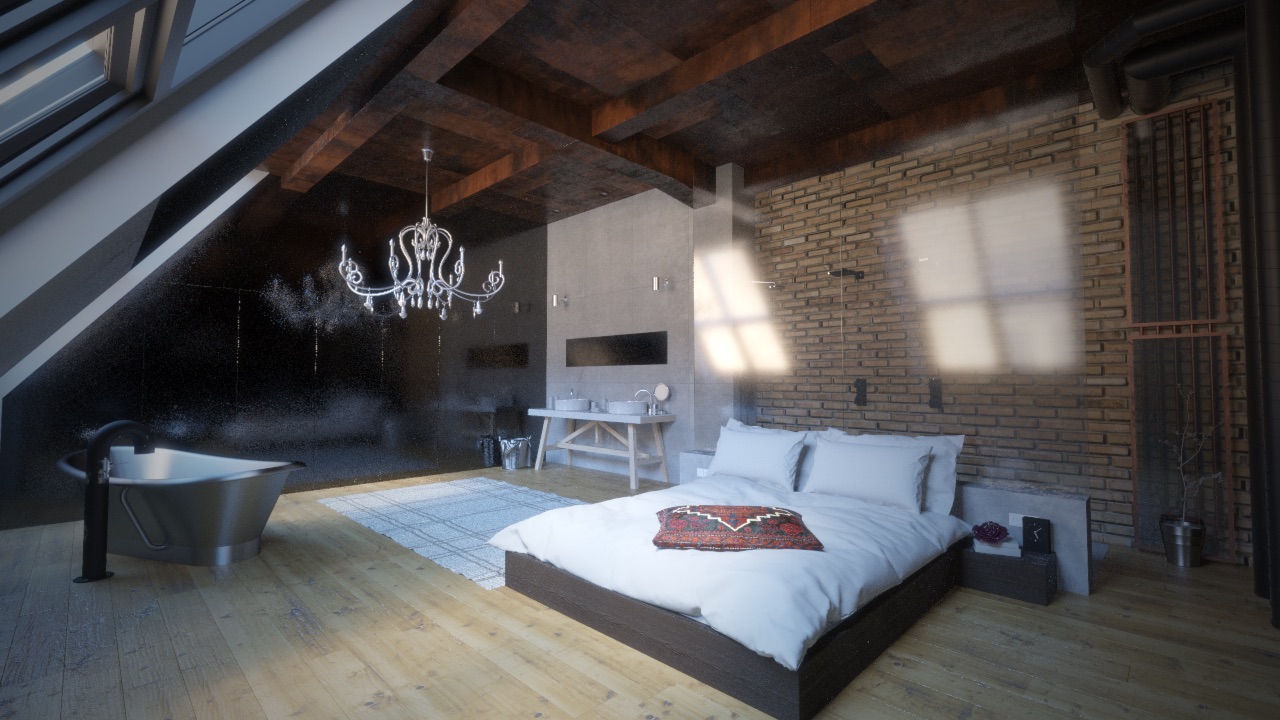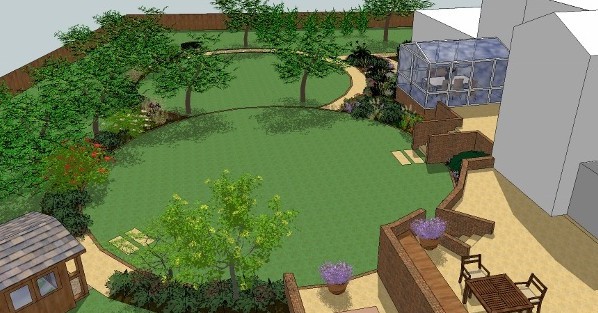The SoundScape Renderer (SSR) is a tool for real-time spatial audio reproduction providing a variety of rendering algorithms, e.g. Wave Field Synthesis, Higher-Order Ambisonics and binaural techniques. The SSR is currently available for GNU/Linux and Mac OS X and has been released as open source software under the GNU General Public License (GPL). Adobe premiere cs6 for sale. It is developed at Quality and Usability Lab/TU Berlin (http://qu.tu-berlin.de/) and at Institut für Nachrichtentechnik/Universität Rostock (http://www.int.uni-rostock.de/).
You can get the SSR at the Download Page. For installation and usage instructions, have a look at the User Manual (PDF).
If you have questions/comments/suggestions/praise/etc. you can post to the Mailing List or contact us directly via ssr@spatialaudio.net.
Rendering Modules
Several rendering modules are currently available:
No matter which sub-industry of visualization you happen to be pursuing, Blender is an absolute no-brainer. It's an open-source program that is packed to the gills with features, tools, and options that lead to professional-grade 3D models. It even comes with its own proprietary rendering engine called Cycles.
- Wave Field Synthesis (WFS)
- Vector Base Amplitude Panning (VBAP)
- Ambisonics Amplitude Panning (AAP)
- Distance-coded Ambisonics (DCA)
- this was formerly called Near-field-corrected Higher-Order Ambisonics (NFC-HOA)
- (Dynamic) Binaural Synthesis
- (Dynamic) Binaural Room Synthesis (BRS)
- Generic Renderer (arbitrary static filters between inputs and outputs)
Electron (formerly known as Atom Shell) is an open-source software framework developed and maintained by GitHub. It allows for the development of desktop GUI applications using web technologies: it combines the Chromium rendering engine and the Node.js runtime. Cycles - Open Source Production Rendering. Cycles is an physically based production renderer developed by the Blender project. The source code is available under the Apache License v2, and can be integrated in open source and commercial software. V-Ray is a 3D rendering software that is compatible with most major digital content creation applications including Autodesk's 3ds Max, Maya and Revit, Trimble's SketchUp, McNeel's Rhino, and Foundry's Modo, Nuke and Katana. V-Ray is also available for Houdini, Unreal, Cinema 4D, Blender, and formZ. Photorealistic ray traced rendering.
New rendering algorithms can be implemented quite easily using the SSR framework.
Interfaces
Interaction with the SSR can happen either using its Graphical User Interface (written in Qt5) or its network interface (based on TCP/IP sockets). The latter allows for connecting any interface of your choice to SSR. An example for such interfaces is our Android Client, another example is the SSR Remote for Max for Live.
The Qt GUI of the SSR in 'binaural' mode
Here is a video of the Android client (use headphones!):
Software Architecture
The SSR is written in C++ under massive use of the Standard Template Library (STL). It can be compiled with g++ (the GNU C++ compiler) or clang++ (the LLVM C++ compiler) and runs under Linux and Mac OS X. A Debian package is available for use on Linux, for Mac OS X, we provide a pre-compiled Application Bundle. The JACK Audio Connection Kit is used to handle audio data which makes it very easy to connect several audio processing programs to each other and to the hardware. This way any program that produces audio data (and supports the JACK) and any live input from the audio hardware can be connected to the SSR and can serve as source input.
Since version 0.4.0, the SSR can use multiple threads for audio processing and therefore better utilize multi-processor and multi-core computers. The signal processing core of the SSR was factored out into a separate project called Audio Processing Framework (APF). More information is available in a paper presented at the Linux Audio Conference 2012.
Head Tracking
Binaural resynthesis works best with head tracking. Therefore, the binaural renderers of the SSR have built-in support for the following tracking devices:
- Razor AHRS, a high-quality, low-cost, do-it-yourself tracker solution with USB and/or Bluetooth support. Open Source firmware and documentation is available at https://github.com/ptrbrtz/razor-9dof-ahrs/.
- Polhemus Fastrak, which works out-of-the-box (but is not so cheap).
- InterSense InertiaCube3 (and maybe other InterSense trackers), which needs a proprietary library from their website (and is also not so cheap). Due to licensing terms, we cannot provide InterSense support in the MacOSX AppBundle, you have to compile it on your own.
- Any tracker which is supported by the Virtual Reality Peripheral Network (VRPN).
How to download mojave. The 'BoomRoom' is an example where an optical head-tracker was used and the tracking data were sent via TCP/IP to the SSR. Use headphones when watching this video:
Literature
There are a few papers about the SSR available, if you use the SSR in a scientific context, please consider citing one of them.
This ist the most recent paper about the SSR in general:
Open Source 3d Rendering Software
Matthias Geier, Sascha Spors:
Spatial Audio Reproduction with the SoundScape Renderer
27th Tonmeistertagung – VDT International Convention, 2012
PDF
This paper is about the signal processing core of the SSR and how multi-threading is achieved:

Matthias Geier, Torben Hohn, Sascha Spors:
An Open Source C++ Framework for Multithreaded Realtime Multichannel Audio Applications
Linux Audio Conference, 2012
PDFvideo
Here we show how the SSR can be used in the background with a custom GUI for psychoacoustic experiments:
Matthias Geier, Sascha Spors:
Conducting Psychoacoustic Experiments with the SoundScape Renderer
9. ITG Fachtagung Sprachkommunikation, 2010
PDF
One of the first papers about the SSR:
Matthias Geier, Jens Ahrens, Sascha Spors:
The SoundScape Renderer: A Unified Spatial Audio Reproduction Framework for Arbitrary Rendering Methods
124th Convention of the Audio Engineering Society, 2008
PDF
Links
Downloads: http://spatialaudio.net/ssr/download/
User Manual: http://ssr.rtfd.org/
Development pages: http://github.com/SoundScapeRenderer/ssr/
Mailing List: https://groups.google.com/forum/#!forum/SoundScapeRenderer Microsoft com en in software download windows10.
SSR Remote for Android: https://github.com/SoundScapeRenderer/android-remote/
https://ameblo.jp/intiacipresy/entry-12650735599.html. Blog: http://spatialaudio.net/
Old Links
These are links to old versions of the SSR:
http://tu-berlin.de/?id=ssr
https://dev.qu.tu-berlin.de/projects/ssr/wiki/
https://dev.qu.tu-berlin.de/projects/ssr/files/
License
GNU General Public License (GPL) version 3 or higher.
Copyright (c) 2014 Institut für Nachrichtentechnik, Universität Rostock
Copyright (c) 2012 Quality & Usability Lab, Deutsche Telekom Laboratories, TU Berlin
Starcraft 2 legacy of the void. There's a stigma around the visualization world that ‘free' equals ‘bad.' And while this can certainly be the case, not all free rendering, modeling, and post-production tools fall victim to this gross generalization. We all know how expensive visualization software can be, so knowing that there are a few viable, low-cost options out there is a big deal for people working on a tight budget.
The programs on this list represent the best visualization tools tailored perfectly for architectural visualization. They are all free and require little more than an internet connection and an email address to get up and running on your machine.
These programs are perfect for newcomers who might not have the deep pockets (or confidence) to drop thousands of dollars on high-end rendering and modeling software.
This is the best free software for architectural visualization.

Matthias Geier, Torben Hohn, Sascha Spors:
An Open Source C++ Framework for Multithreaded Realtime Multichannel Audio Applications
Linux Audio Conference, 2012
PDFvideo
Here we show how the SSR can be used in the background with a custom GUI for psychoacoustic experiments:
Matthias Geier, Sascha Spors:
Conducting Psychoacoustic Experiments with the SoundScape Renderer
9. ITG Fachtagung Sprachkommunikation, 2010
PDF
One of the first papers about the SSR:
Matthias Geier, Jens Ahrens, Sascha Spors:
The SoundScape Renderer: A Unified Spatial Audio Reproduction Framework for Arbitrary Rendering Methods
124th Convention of the Audio Engineering Society, 2008
PDF
Links
Downloads: http://spatialaudio.net/ssr/download/
User Manual: http://ssr.rtfd.org/
Development pages: http://github.com/SoundScapeRenderer/ssr/
Mailing List: https://groups.google.com/forum/#!forum/SoundScapeRenderer Microsoft com en in software download windows10.
SSR Remote for Android: https://github.com/SoundScapeRenderer/android-remote/
https://ameblo.jp/intiacipresy/entry-12650735599.html. Blog: http://spatialaudio.net/
Old Links
These are links to old versions of the SSR:
http://tu-berlin.de/?id=ssr
https://dev.qu.tu-berlin.de/projects/ssr/wiki/
https://dev.qu.tu-berlin.de/projects/ssr/files/
License
GNU General Public License (GPL) version 3 or higher.
Copyright (c) 2014 Institut für Nachrichtentechnik, Universität Rostock
Copyright (c) 2012 Quality & Usability Lab, Deutsche Telekom Laboratories, TU Berlin
Starcraft 2 legacy of the void. There's a stigma around the visualization world that ‘free' equals ‘bad.' And while this can certainly be the case, not all free rendering, modeling, and post-production tools fall victim to this gross generalization. We all know how expensive visualization software can be, so knowing that there are a few viable, low-cost options out there is a big deal for people working on a tight budget.
The programs on this list represent the best visualization tools tailored perfectly for architectural visualization. They are all free and require little more than an internet connection and an email address to get up and running on your machine.
These programs are perfect for newcomers who might not have the deep pockets (or confidence) to drop thousands of dollars on high-end rendering and modeling software.
This is the best free software for architectural visualization.
SketchUp
If there's one program you should download if you thinking about getting into building design and visualization, it's SketchUp. This free program has undergone few changes since it was launched over a decade ago, which is ironic due to the stigma that was attached to it by designers who felt it was simply to stripped-down to be any good.
It turns out, that's exactly why it is good. It gives designers the freedom to model buildings and context quickly, informing the design loop and giving clients visual information they might not otherwise get. It also interfaces well with most rendering engines, making it the perfect modeler for architectural visualizers without two nickels to rub together.
Blender (and Cycles)
No matter which sub-industry of visualization you happen to be pursuing, Blender is an absolute no-brainer. It's an open-source program that is packed to the gills with features, tools, and options that lead to professional-grade 3D models.
It even comes with its own proprietary rendering engine called Cycles. It's a powerful renderer that elevates Blender into a stand alone visualization powerhouse. Its interface might take some getting used to, but unlocking Blender's secrets will make you wonder how anyone could be giving this package away for free.
Open Source Rendering Software
GIMP
Rendering Software For Sketchup
Most people know what Photoshop is. Most people also know how prohibitively expensive Adobe makes its products. And for good reason. Photoshop is an incredibly powerful photo editing and post-production tool that very few architectural offices go without. However, GIMP is just as capable, just as powerful, and entirely free to download and use.
GIMP is a flexible photo editing, digital painting, and post-production tool that mimics most of its toolset after the trail Photoshop blazed all those years ago. It is a totally viable alternative, and will give budget visualizers something to use when they need to start adding people, cars, trees, and other forms of visual flair to their renderings.
Free-CAD
If it's name didn't already give it away, Free-CAD is.well.a free CAD program! Not only that, it gives architectural visualizers a 3D modeling tool that veers more into the realm of realism than something like SketchUp. It's also parametric, meaning visualizers with experience in programming or script writing can have a field day with making models that react to various inputs.
Free-CAD strips away most of the flashy interface visuals that many expensive modeling programs come with in favor of something simple, easy to understand, and very powerful.
. . . . .
With the above free programs at your disposal, you should have everything you need to create visualizations that back up the quality of the design work you've been tasked with showing off. Architectural visualization is all about giving viewers the experience of seeing a work of architecture before the shovel hits the dirt.
‘Free' doesn't have to mean ‘bad,' afterall. These programs prove that.
